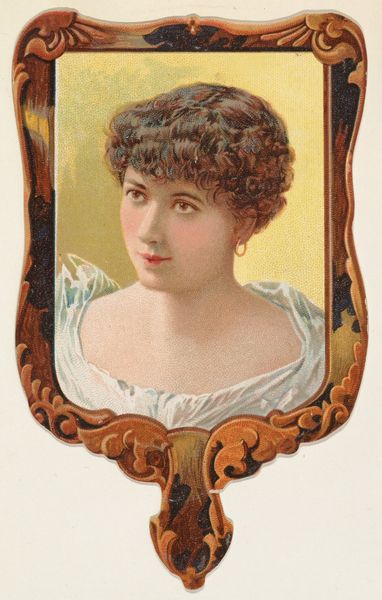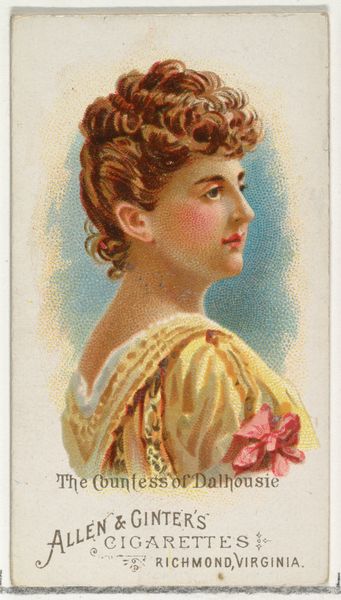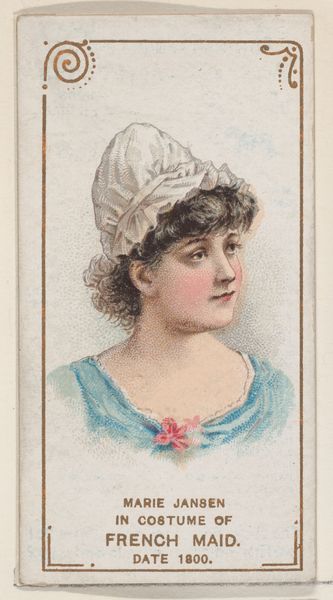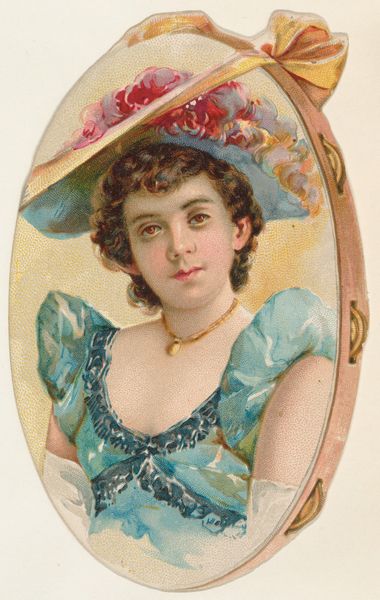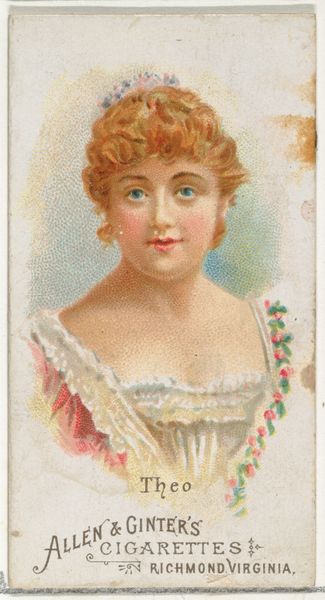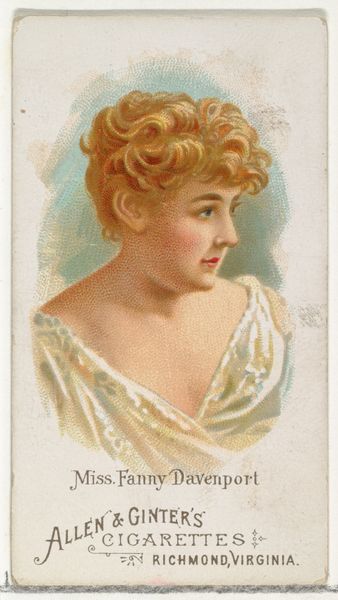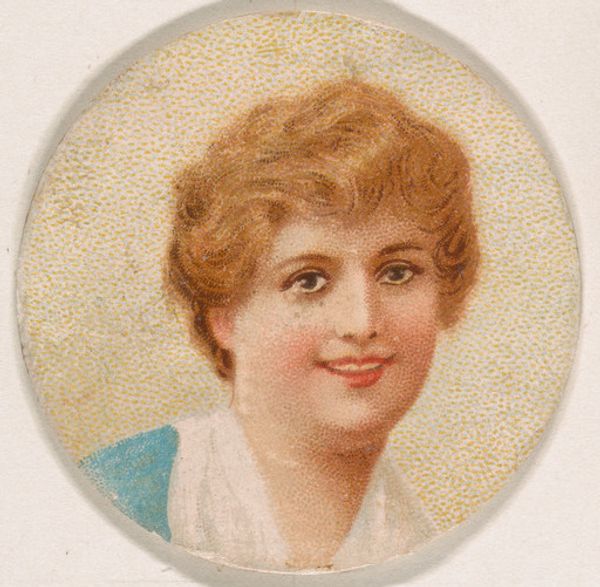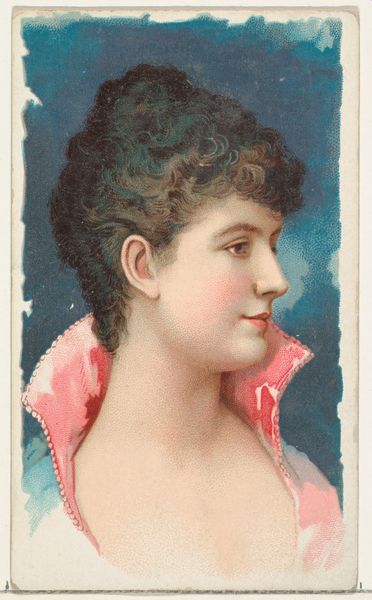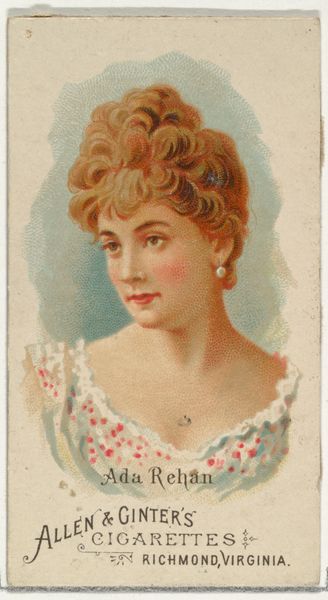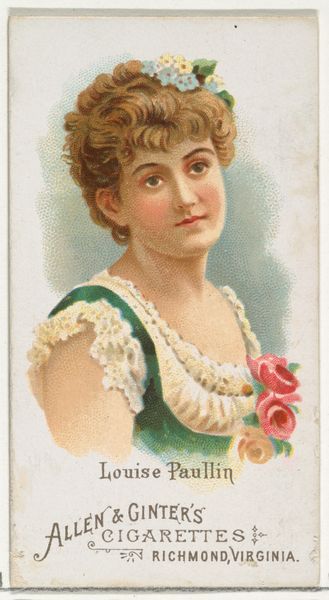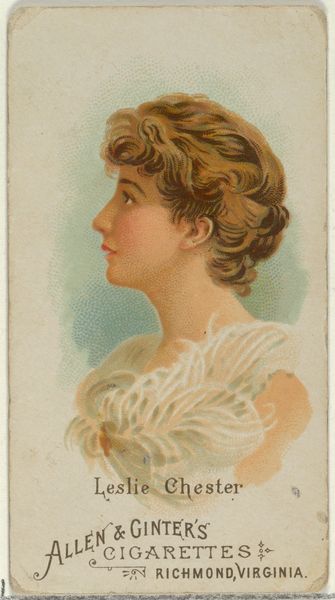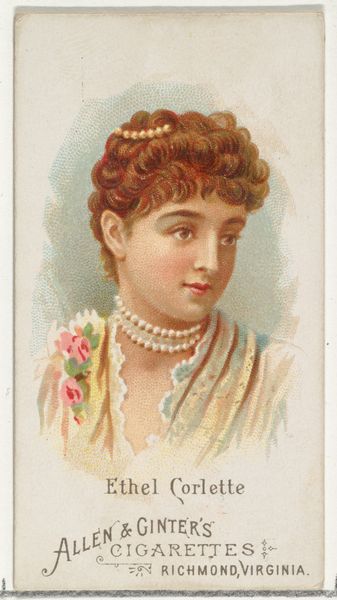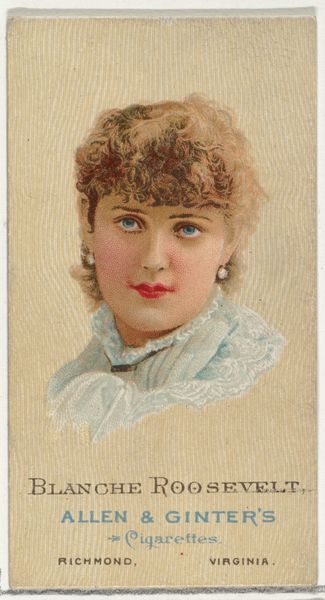
Pad and Pencil, from the Novelties series (N122) issued by Gail & Ax Tobacco to promote Navy Long Cut 1889
0:00
0:00
drawing, print, watercolor
#
portrait
#
drawing
# print
#
watercolor
#
watercolour illustration
#
portrait art
Dimensions: Sheet: 4 1/4 × 2 1/2 in. (10.8 × 6.3 cm)
Copyright: Public Domain
Curator: Here we have "Pad and Pencil," a print employing watercolor and drawing, part of the Novelties series (N122). Gail & Ax Tobacco issued it in 1889 to promote Navy Long Cut. It resides here at the Metropolitan Museum of Art. Editor: It’s got such a demure, almost naive air. The coloring is muted and soft, but her gaze feels incredibly direct, doesn't it? Makes you wonder what's behind the softness. Curator: It's interesting you pick up on that tension. These promotional images often played on archetypes of feminine beauty, contributing to and reinforcing certain social ideals of the time. The woman is adorned with light-colored clothes and has gentle expression. Editor: It’s funny though, this is promoting tobacco, something we’d now consider a fairly masculine thing. So, who was this actually targeting? Was the idea, like, a man buys it hoping to embody the romanticism depicted here? Or that his wife approves of this specific brand? Curator: Exactly. Tobacco companies frequently used idealized female images to broaden their appeal, associating their product with gentility and sophistication, while at the same time the distribution channels would be mostly for men. It was marketing leveraging aspirational qualities. Editor: Makes you think, doesn't it? We're still doing this, using "ideals" to sell everything from cars to vacations. Different image, same game. But beyond all the manipulation, I’m oddly charmed by the hand-done illustration style in this print. You can feel the presence of the artist, the actual human touch. Curator: Absolutely. The technique highlights the contrast. What appears straightforward on the surface, the beautiful portrait of a woman, in fact sits on top of an intricate marketing strategy with roots in the cultural standards of the 19th century. Editor: It goes to show you: even ephemera, even the throwaway things made to catch your eye on the shelf, they end up telling a rich story about who we were… or at least, who someone *wanted* us to be. Curator: Precisely. It reminds us that art doesn’t exist in a vacuum. Each piece engages a complex interplay of societal norms and institutional aims. And the beauty of art is that all of these conversations can coexist.
Comments
No comments
Be the first to comment and join the conversation on the ultimate creative platform.
